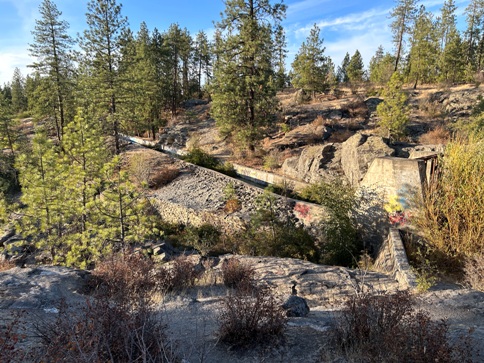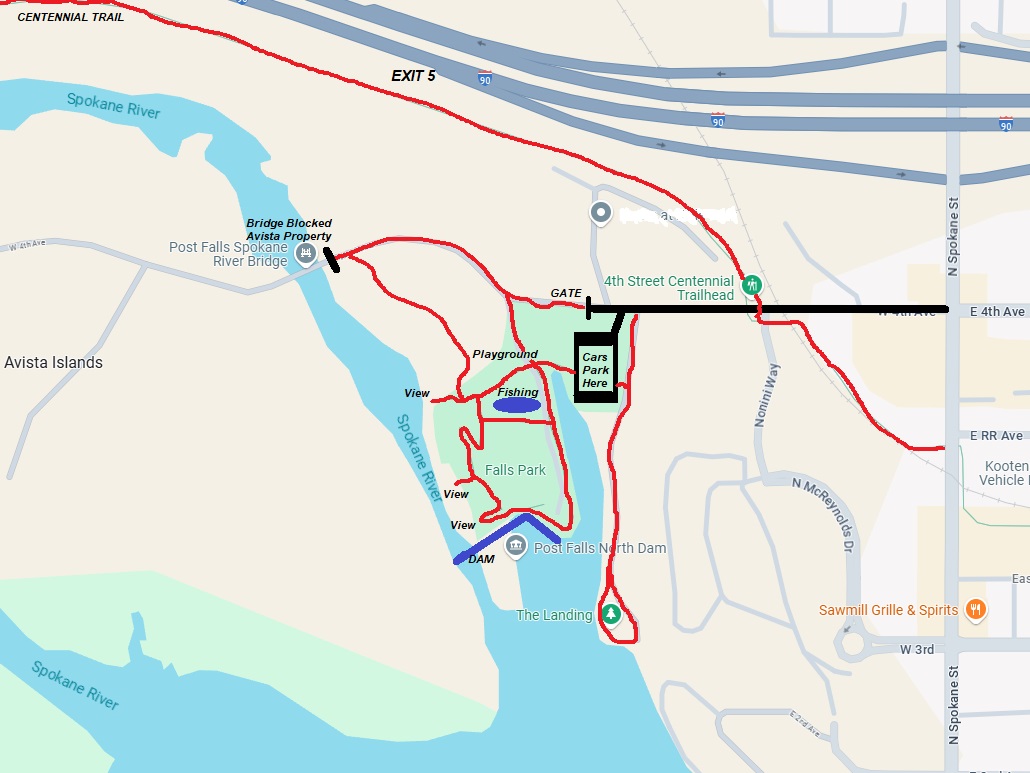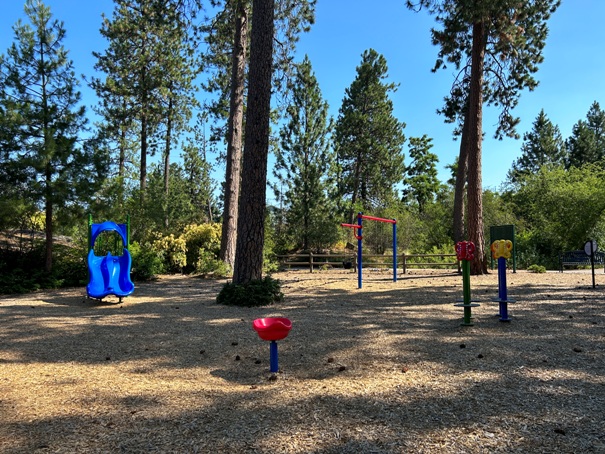
Falls Park in Post Falls, Idaho
WillhiteWeb.com
This small park packs a whole lot to see in a small space. The highlight is the view of the Post Falls Dam during the Spring runoff but there is much more to see. Some short paths go to other viewpoints and to the Avista Island Bridge. The fishing pond is full in Spring and most of Summer but then during Winter months is empty. Interpretive signs point out some of the historical artifacts remaining in the area from past water irrigation projects.
NOTE: Construction on the dam has closed part of the park until 2027
The Landing
This is a small area next to the park that offers views of the top of the dam and the large lake (Spokane River) formed behind it.
History:
The Post Falls hydroelectric project on the Spokane River began operating in 1906 to provide power for local industries. The plant continues to generate electricity today, using most of the same equipment installed more than 100 years ago. The Spokane River splits into three channels, each with a natural falls. Just downstream of the falls, the three channels rejoin. In the late 1800s, pioneer Frederick Post discovered this site and immediately recognized its development potential. He built a dam across the rivers north channel to divert flow to his sawmill. The timber-crib dam was about 20 feet high and several logs thick. The dam did not have head gates, so water flowed over the entire dam during periods of high flow. In 1904 the newly formed Washington Water Power Company purchased Posts site and began making plans to develop a hydroelectric facility that could provide power to mines nearly 100 miles away via the longest high-voltage transmission line in the world at that time. Two other dams were erected at the other two locations. Washington Water Power completed the three dams and the powerhouse in only two years. Since its completion, the Post Falls project has served as an important source of electricity for the operation of mines, mills, factories, cities, businesses, and railways in northern Idaho and eastern Washington. Today, Avista Corp manages the falls and hydroelectric generation.
Access:
Take Exit 5 off Interstate 90. Go south on Spokane Street a block to 4th Avenue. Turn West and go to the parking area. (The parking lot is the construction staging area, possibly until 2027.
Avista High Bridge
The concrete arch bridge was designed by the Washington Water Power Co. in 1929. The bridge replaced a wooden structure which provided both railroad and motor vehicle access to the island during the construction of the dam and powerhouse. It continues to serve as the only access to the island for the maintenance and operation of the Post Falls Hydroelectric Development.
Corbin Ditch
In 1899, Daniel Chase Corbin and other investors saw the potential to profit from the water rights and agricultural potential of the valley and formed the Spokane Valley Irrigation Co. Over the next decade, it developed the 34 mile Corbin Ditch and more than 54 miles of lateral ditches that brought water to thousands of acres of orchards and farms. After the wood-lined canals and head gate were completed, up to 200 cubic feet of water per second rushed through the gate and out into Spokane Valley.
The gentle slope between Post Falls and Spokane Valley made ideal conditions to introduce canal irrigation at the turn of the century. That water provided the catalyst for the agriculture that became a staple of the areas early economy, turning the arid Spokane Valley into a lush valley of apple orchards.
Two blocks of concrete, each roughly as tall as a two-story house, sit against the banks fo the canal that was first used to power lumber and flower mills in the late 1800s. Between them, foot-wide timbers make up the newly restored gate. On top, walnut-sized bolts hold together a series of metal gears used to lift the gate. The sheer size of the parts makes one wonder how the original gate was constructed and put into place without a crane or other modern tools. The Corbin Ditch Headgate is one of the most visible remnants of agricultural and irrigation history in the Inland Northwest region.
The Herborn Coat of Arms
Herborn Germany was the birthplace of the Post Falls founder, Frederick Post. Herborn Germany was recognized as the Associate City of Post Falls in 1991.
In 1993, Herborn presented the citizens of Post Falls its Coat of Arms as part of the Falls Park project. Herborns coat of arms is based on the city seal, which was used as early as 1269. In the foreground, St. Peter the towns protector saint sits on a throne in a palace. The two counts of Nassau, Walram and Otto pray to him. In the background are four towers, including a gatetower.

























Spring time
Summer time
Inlet from the river to Corbin Ditch
Summer time below the dam
Fishing the pond
Willow trees are popular for photography in this park.
Sunset from The Landing
View from The Landing
Playground open in the winter.
Spring time below the dam
Spring time below the dam
Section of Corbin Ditch
Corbin Ditch Headgate
Restrooms
Picnic tables at The Landing

























